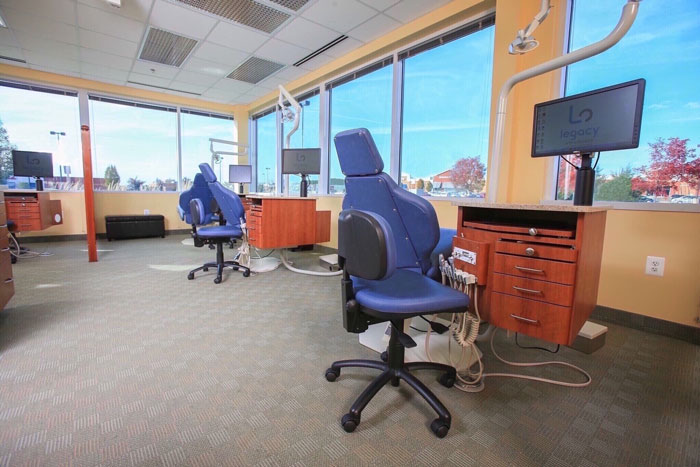Some Ideas on Legacy Orthodontics You Need To Know
Some Ideas on Legacy Orthodontics You Need To Know
Blog Article
Not known Details About Legacy Orthodontics
Table of ContentsSome Known Incorrect Statements About Legacy Orthodontics Some Known Questions About Legacy Orthodontics.Getting The Legacy Orthodontics To WorkLegacy Orthodontics Things To Know Before You Get ThisGetting The Legacy Orthodontics To Work
In enhancement, we offer adjustable therapy schedules, versatile payment choices and a fun, enjoyable experience.An orthodontist is a dentist educated to diagnose, avoid, and deal with teeth and jaw irregularities. They correct existing problems and are educated to recognize troubles that may create in the future. Orthodontists collaborate with people of every ages, from youngsters to grownups. People frequently connect a best smile with health.
Malocclusion, or misaligned teeth, can result in dental problems, including tooth decay, gum disease, and difficult or agonizing chewing. Not every person is born with straight teeth. If you have a bad bite or big spaces in between your teeth, you might wish to consult a dental practitioner focusing on orthodontic treatment.
Legacy Orthodontics - An Overview
( Photo Credit Scores: DigitalVision/Getty Images) Orthodontists make use of taken care of and detachable oral gadgets, like braces, retainers, and bands, to transform the setting of teeth in your mouth. Orthodontic therapy is for dental abnormalities, including: Crooked teethBite issues, like an overbite or an underbiteCrowded teeth or teeth that are also much apartJaw misalignmentThe goal of orthodontic treatment is to enhance your bite.
A healthy and balanced bite ensures you can eat, eat, and talk properly. While you might consider orthodontists as generally for kids or teenagers that require dental braces, they can correct oral issues at any age. Orthodontists attend college, oral college, and orthodontic college. After college graduation, they invest 2 or 3 years in an orthodontic residency program.
, yet not all dental professionals are orthodontists. They focus on 2 areas: Just how to correctly and securely move teeth How to effectively lead advancement in the teeth, jaw, and faceOnce an orthodontist has actually finished training, they have the alternative to end up being board certified.
9 Simple Techniques For Legacy Orthodontics
Misalignment, or malocclusion, is the most typical factor people see an orthodontist. It is genetic and is the outcome of dimension differences between the top and lower jaw or between the jaw and teeth. Malocclusion results in tooth overcrowding, an irregular jaw, or uneven bite patterns. Malocclusion is normally treated with: Your orthodontist affixes steel, ceramic, or plastic square bonds to your teeth.
If you have just minor malocclusion, you may have the ability to make use of clear braces, called aligners, rather than conventional dental braces (https://hubpages.com/@legacyortho). Some individuals require a headwear to help move teeth right into line with pressure from outside the mouth. After braces or aligners, you'll require to put on a retainer. A retainer is a customized tool that keeps your teeth in position.
They're usually used on children. They can produce additional area in the mouth without needing to draw teeth. If you have a severe underbite or overbite, you could require orthognathic surgical treatment (also called orthodontic surgical procedure) to extend or shorten your jaw. Orthodontists use cables, medical screws, or plates to support your jaw bone.
You may require to see an orthodontist if you have: Crowding or otherwise enough area for all of your teethOverbite, when your upper teeth come over your bottom teethUnderbite, when your bottom teeth are also much forwardSpacing or issues with gapsCrossbite, which is when your top teeth fit behind your bottom teeth when your mouth is closedOpen bite or a vertical gap between your front bottom and top teethMisplaced midline, when the center of your base and upper teeth don't line up Correcting an oral malocclusion can: Make biting, eating, and talking easierImprove the balance of our face and your total appearanceEase discomfort from temporomandibular joint problemsDifferent your teeth and make them find more information much easier to cleanse, assisting stop dental caries or dental caries It's typically a dentist that initially notices misaligned teeth throughout a routine exam.
More About Legacy Orthodontics

During your initial orthodontic appointment, you'll likely have: A dental examPhotos taken of your face and smileDental X-raysPanoramic (360 degree) X-rays of your face and headImpressions to create molds of your teethThese tests will assist your orthodontist recognize just how to proceed with your treatment. leesburg clear braces. An orthodontist is a dental professional who's had training to treat your teeth and jaw
An orthodontist is focused on your bite, so something like a chipped tooth would be handled by a dental practitioner. Orthodontists are focused on your bite, or the means your teeth fit with each other, and the straightness of your teeth.
Ever asked yourself just how celebs constantly seem to have flawlessly straightened teeth? Orthodontists are oral specialists who concentrate on correcting irregularities in the teeth and jaws.
How Legacy Orthodontics can Save You Time, Stress, and Money.

, orthodontists have a diverse toolkit at their disposal. These tried-and-true braces utilize a system of brackets bound to the teeth and linked by wires.
These removable trays are custom-made to progressively move the teeth's placement. In cases of slim jaws, palatal expanders can be made use of to develop area for proper tooth positioning.
Report this page